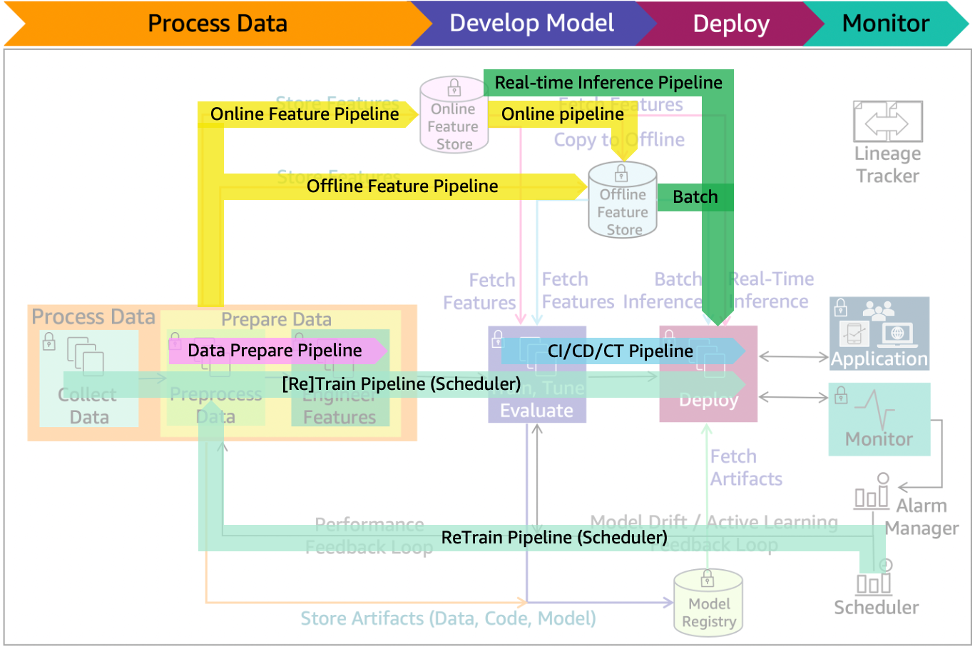ML lifecycle phase - Deployment
After you have trained, tuned, and evaluated your model, you can deploy it into production and make predictions against this deployed model. Amazon SageMaker Studio can convert notebook code to production-ready jobs without the need to manage the underlying infrastructure. Be sure to use a governance process. Controlling deployments through automation combined with manual or automated quality gates ensures that changes can be effectively validated with dependent systems prior to deployment to production.

Figure 15 – Deployment architecture diagram
Figure 15 illustrates the deployment phase of the ML lifecycle in production. An application sends request payloads to a production endpoint to make inference against the model. Model artifacts are fetched from the model registry, features are retrieved from the feature store, and the inference code container is obtained from the container repository.

Figure 16: Deployment main components
Figure 16 lists key components of production deployment including:
-
Blue/green, canary, A/B, shadow deployment/testing - Deployment and testing strategies that reduce downtime and risks when releasing a new or updated version.
-
The blue/green deployment technique provides two identical production environments (initially blue is the existing infrastructure and green is an identical infrastructure for testing). Once testing is done on the green environment, live application traffic is directed to it from the blue environment. Then the roles of the blue/green environments are switched.
-
With a canary deployment, a new release is deployed to a small group of users while other users continue to use the previous version. Once you’re satisfied with the new release, you can gradually roll it out to all users.
-
A/B testing strategy enables deploying changes to a model. Direct a defined portion of traffic to the new model. Direct the remaining traffic to the old model. A/B testing is similar to canary testing, but has larger user groups and a longer time scale, typically days or even weeks.
-
With shadow deployment strategy, the new version is available alongside the old version. The input data is run through both versions. The older version is used for servicing the production application and the new one is used for testing and analysis.
-
-
Inference pipeline - Figure 17 shows the inference pipeline that automates capturing of the prepared data, performing predictions and post-processing for real-time or batch inferences.
-
Scheduler pipeline - Deployed model is representative of the latest data patterns. When configured as shown in Figure 17, re-training at intervals can minimize the risk of data and concept drifts. A scheduler can initiate a re-training at business defined intervals. Data preparation, CI/CD/CT, and feature pipelines will also be active during this process.

Figure 17: ML lifecycle with scheduler re-train, and batch/real-time inference pipelines